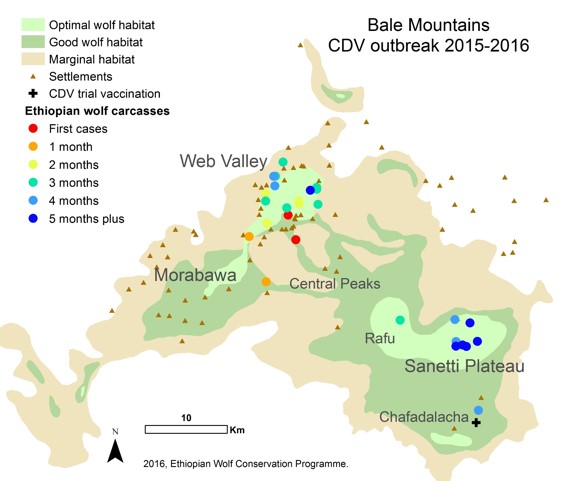

By Eric Bedin and Alo Hussein
In the Bale Mountains, September marks the onset of the wolf breeding season. After a frantic mating period, finely synchronized within each subpopulation, this is the time when wolf monitors look for signs of denning behaviour and pregnancies. This time round their schedule changed dramatically. On 30th September, our guards in Web Valley camp alerted us of a young wolf that had died the previous night. Three days later another carcass was found nearby. Our team conducted detailed post-mortem examinations and collected samples, and by early October the Animal and Plant Health Agency in the UK confirmed canine distemper virus (CDV) as the cause of these two deaths.
From the first death to March we found 34 wolf carcasses, including eight tagged animals, and 17 young wolves born on the previous breeding season. All 14 carcasses that could be sampled and tested were positive for CDV (and negative for rabies), and the timing and location of the deaths gave us some light into the transmission path (see map). The first casualties were detected in Web Valley (where the disease persisted for nearly three months) and the carcasses found in East Morabawa were from wolves that died around the same time. While it was unclear how the virus reached the Sanetti Plateau three months later (possibly via the Central Peaks) this was the outcome that we had feared the most: after the recent rabies outbreak, any additional mortality could have dramatic consequences for this population. The field team found the last wolf carcass on 23th March, when the epizootic was clearly dying out.
